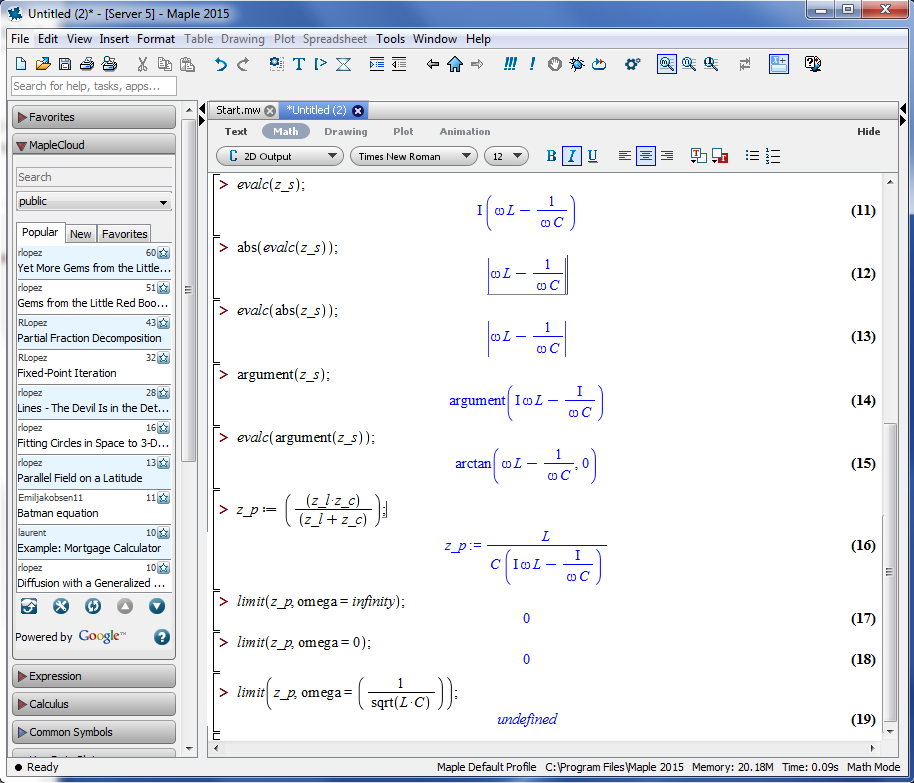Pages created and updated by
Terry Sturtevant
Date Posted:
June 5, 2017
Maple Tutorial: Phasors and AC Circuits
Maple is a commercial program.
It is a computer algebra system (CAS) like
Maxima or Mathematica.
There are various tutorials out there on how to use Maple; this one
is designed to focus on its use for AC circuit analysis; i.e. the
use of complex numbers for AC
analysis with capacitors and inductors.
Sample AC Circuit
A basic example of the use of phasors is the
investigation of simple series and parallel LC circuits. For ideal
components,
Z
L= I ω L
and
Z
C= 1/ (I ω C )
Here are simple series and parallel LC circuits:


A computer algebra system can be very useful for analyzing
circuits like this.
-
-
-
-
-
-
Opening Maple:
- Open Maple from the menu or the desktop icon.
-
Defining Impedances
- It is quite useful to not have to specify component
values at the beginning, because the results can be determined
algebraically once, after which it is only necessary to substitue in
specific quantities.

-
Series Circuit Properties
-
The impedance of an LC circuit is easy to check in 3 specific
situations;
the high frequency limit,
the DC frequency limit,
the resonant frequency,
where
ω = 1/√ LC

Limits are useful for testing the high frequency case:

Note in the high frequency case, where ω goes to infinity, the
mathematical result depends on the sign of L; since L can only
be
positive
physically, then this gives the expected result.
Limits can also be used for the low frequency case:

Finding the value at the resonant frequency can be done by
using the limit as well:

It can also be found by substitution, as shown in the following:

Note that without using the simplify function, the fact
that the result is zero is not immediately apparent.

It's not clear from the above whether the argument
function is works, but a further step clarifies it:

The evalc function is for evaluating complex numbers,
and taking the absolute value gives the magnitude. (Note the order of
abs
and
evalc doesn't matter.)
-
Parallel Circuit Properties
-

The high and low frequency cases can be tested as before:

Since the impedance at the resonant frequency is undefined, the
limit has to be used.
-
Entire Session Transcript:





















